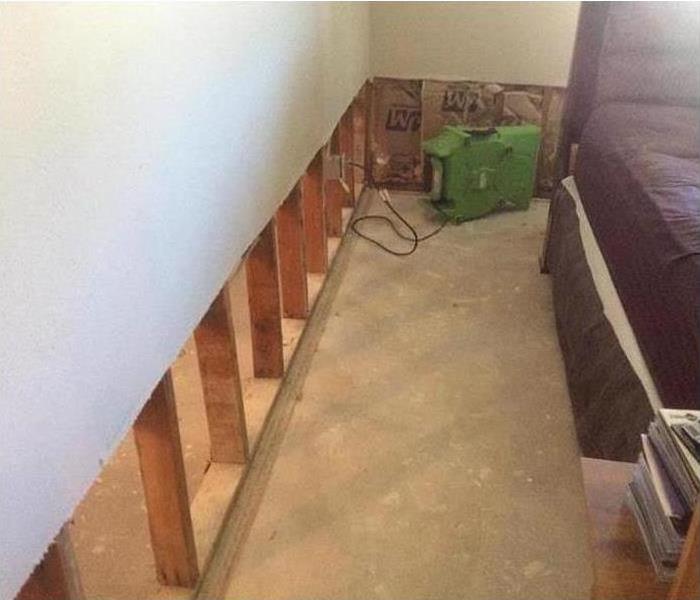5 Steps To Clean Contents After a Flood
1/11/2022 (Permalink)
Five Content Cleaning Steps
The contents in a flooded home may suffer severe damage. Storm and water damage mitigation and restoration companies follow these five content cleaning steps to care for items exposed to flooding.
1. Determine What Can Be Cleaned
Most hard or non-porous items can be cleaned and disinfected, but porous contents and building materials may not withstand cleaning. It also might not be possible to ensure that these contents are completely clean and do not pose any recontamination risk. Ask restoration experts whether it is worth the time and effort necessary to try to clean porous items.
2. Clean and Disinfect Contents
The content cleaning process involves removing dirt and debris and disinfecting items. Both of these steps are critical. Flood water is considered Category Three and may contain chemicals, microbes, or solid waste. For this reason, it is essential to make sure that all items exposed to flooding are thoroughly cleaned and sanitized.
3. Clean and Disinfect Flooded Areas
It is also important to clean and treat building materials exposed to flooding. Do not restore clean contents to an area that has not yet been cleaned, treated, and allowed to dry. Doing so can result in recontamination and prolong the mitigation and restoration process.
4. Allow Affected Areas To Dry
Moisture resulting from flooding can lead to mold growth. Experts recommend the use of air movers and dehumidifiers to prevent mold.
5. Restore Contents
Once an area has been cleaned, disinfected, and dried, you may start putting contents back into your house. Be sure to avoid re-introducing any items that have not been cleaned and treated.
Following these measures after a flood can properly clean the contents and affected areas of your home in Fort Collins, CO. Content cleaning professionals are capable of achieving the best results in the least amount of time, which can help to prevent secondary damage such as mold growth.






 24/7 Emergency Service
24/7 Emergency Service